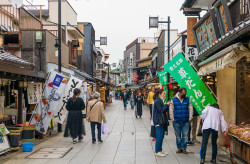
January 24, 2019
Lesser Known Social Ills in Japan
What are some lesser known social ills that exist in Japan?
By Masaru Urano
Anyone who has lived in Japan knows that it’s not the spotless, futuristic utopia full of happy locals that tourism ads and travel vloggers make it out to be. Behind the veil of government-promoted catchphrases and orientalist Instagram snapshots lie many social ills shared by other developed nations: staggering wealth disparity, rampant sexism, a plummeting population, xenophobia, homophobia, a resurgence of the populist right, widespread mental health issues… the list goes on and on.
While many of them do make the headlines in domestic news publications, there are also less well-known issues that plague Japan. Here are two problems that are not commonly recognized in Japan.
Chemical Farming
Due to its mountainous terrain, Japan’s farmland accounts for only an eighth of total land area. Japan tries to make up for the lack of space through intensive farming methods, meaning that agricultural chemicals such as fertilizers and pesticides are utilized to their fullest extent. In 2016, Japan used 11.41 kilograms of pesticides per hectare of cropland, making it one of the leading users of pesticides in the The Organisation for Economic Co-operation and Development (OECD).
While proponents argue that the chemical usage poses no danger to human health, advocates against its usage note that the Japanese agricultural industry uses chemicals that are banned in other parts of the world. An example is neonicotinoid, a category of chemicals used as an insecticide that is banned in the EU and regulated in the US and Canada. The chemicals are known to kill insects such as bees by disabling their nervous systems, causing whole colonies to die out and destabilizing the ecosystem. While studies are still in their early research stages, the chemicals are feared to have similar effects on other animals, including human babies. Japan is considerably less restrictive on neonicotinoid usage, with some insisting that the ways they chemicals are administered in Japan don’t pose threats to wildlife.
Poverty Girls
The phrase “貧困女子 — hinkon joshi (poverty girls)” made headlines last year when the National Institute of Population and Social Security Research found that one in three working-age women living alone lives in poverty. The rate for single men was 25%, indicating that there was a large gender gap in the ability of singles to maintain a living. The situation is bleaker for single-mother households, for whom the poverty rate exceeds 50%.
One culprit is the fact that a majority of Japanese women are hired as part timers, dispatch workers or other “irregular” forms of employment. Irregular employees’ average salaries are considerably lower than that of the regular employee and often don’t come with employment benefits such as insurance and childrearing support.
The intersectional nature of this issue means that poverty is especially dangerous to the livelihoods of these women. Homelessness brings not only the harms of an unstable life and lower access to employment, but also the threat of sexual assault. There is also strong pressure on poor women to sell their bodies to make ends meet, which brings a host of other issues such as exploitative work environments and exposure to STDs.







